Tomatoes crack when ripe in a greenhouse and open field: reasons and what to do, how to avoid it
Many summer residents from year to year complain that their tomato fruits are cracking. Indeed, such tomatoes are not suitable for long-term storage, and it will hardly be possible to sell them on the market at a good price.
Well, if you want to know all the possible reasons for the ripening of tomatoes, then you are on the right track. Next, we will analyze each of the possible reasons why tomatoes crack, and also give recommendations on how to avoid this.
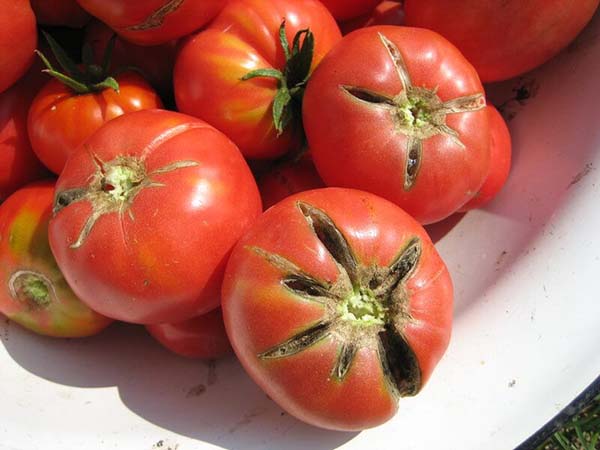
Content
Why tomatoes crack when ripe in a greenhouse and in the open field: reasons
What is the danger of cracking tomatoes?
Various pathogens can easily enter the cracks, which can lead to infection. If infection does not occur, then after a while the wounds (cracks) will cork and the entrance for bacteria is closed, in other words, the danger disappears. However, the final appearance and quality of the cracked fruit leaves much to be desired.
Uneven watering or sudden changes in humidity
The main reason for the cracking of tomatoes is, of course, a violation of the irrigation regime, namely, its unevenness (it is very dry, then it is humid; it is dry, then it is very humid).
By the way! Cracks that appear as a result of improper watering - a sharp change in humidity, are also called radial.

However! It is believed that due to a violation of the water balance on the fruits of tomatoes, not radial cracks appear, but longitudinal cracks (see photo below).
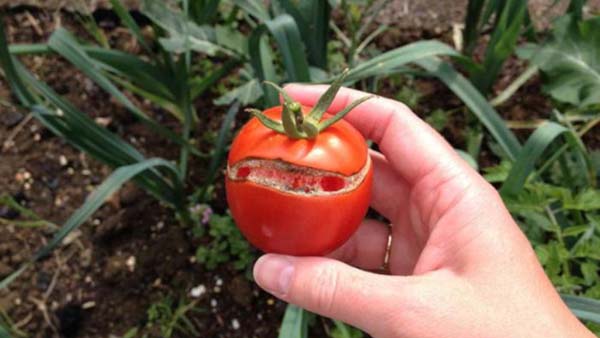
Let's say that you haven't been to the country for a long time (more than a week). The weather was dry, the soil in the tomato beds dried out, the fruits stopped growing (in bulk), the tomato skins became coarse and lost elasticity. And so you arrived and began to water your tomatoes abundantly, thereby dramatically changing (increasing) the moisture of the soil. As a result, water began to flow into the fruits very quickly, they accelerated growth, the walls of the epidermis, which simply could not withstand the increased pressure, burst = the skin of the tomatoes cracked.
Interesting! Moreover, most often this (cracking) occurs when the fruits have already gained weight, but are still green and are just beginning to acquire the appropriate color (redden or yellow), i.e. upon reaching the fruit of technical maturity.

Or, for example, cracking will surely occur if you very rarely watered tomatoes before the formation of fruits, the plants are already used to growing in conditions of a lack of moisture, and when they began to fill up, they suddenly began to be poured abundantly.
Naturally, tomatoes can crack like in the open field, if it rains after a long period of drought, so in the greenhousewhen, due to the very sunny weather in the greenhouse, the temperature increased and the soil quickly dried out.
In other words, you must properly (moderately) water your tomatoes, observing given mode glaze. And for better moisture retention, tomato beds should mulch.
By the way! The site already has a detailed article about how to water tomatoes in the open field and in the greenhouse.
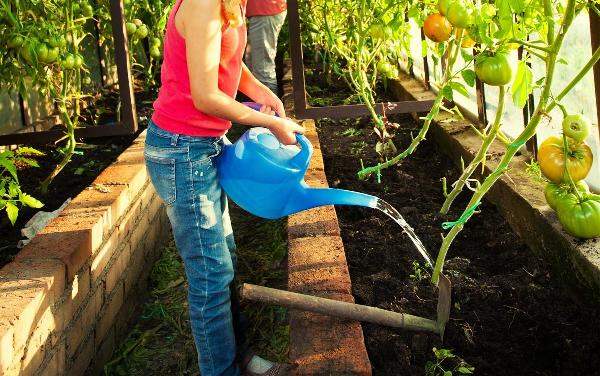
Note! It is also not worth it to get too carried away with watering, because high soil moisture often causes the development of such a dangerous fungal disease as late blight of tomatoes.
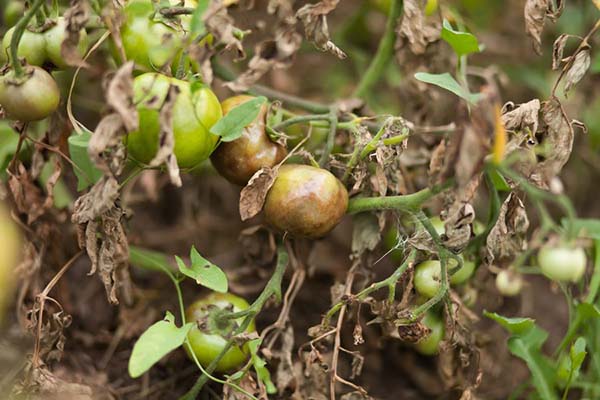
Sudden changes in temperature
Tomatoes often crack due to the large temperature difference between day and night.
Very often, cracking of tomatoes occurs due to low night temperatures. The fact is that under such conditions, evaporation decreases, moisture accumulates in the fruits and they crack. Moreover, at low temperatures, the skin loses its elasticity and, accordingly, is easily prone to cracking.
Moreover, in this case, you should not water the tomatoes in the evening (after sunset).
What to do? In the heat, always open the doors and vents of the greenhouse for ventilation, and close it at night if possible so that a comfortable temperature remains inside.
Advice! The site has detailed material about the rules for growing tomatoes in a greenhouse.
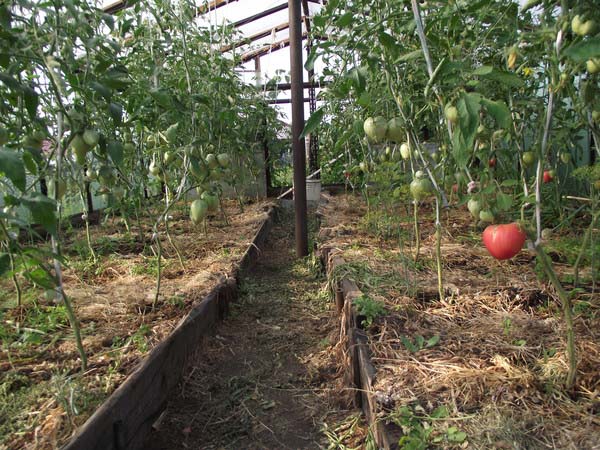
Excess nitrogen
An overdose of tomatoes (like any other plants) with nitrogen is especially fraught with negative consequences, since due to nutritional disturbances, fruits may appear concentric cracks.
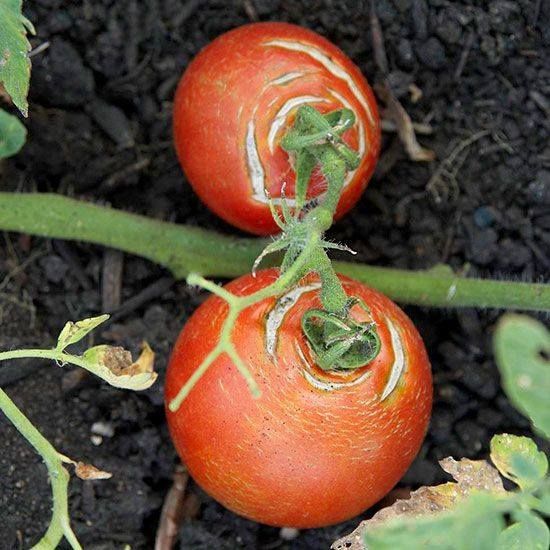
Therefore, be especially careful and know when to apply nitrogen fertilizers, and as mineral (urea, ammonium nitrate), and organic like chicken manure, mullein.
Calcium and Boron Against Fruit Cracking
It is believed that feeding tomatoes with calcium (for example, calcium nitrate) and boron (for example, boric acid) can significantly reduce the cracking of tomatoes during their ripening period.
Important! Calcium is well absorbed only in the presence of boron.
Variety tendency
Here the logic is simple: it is quite obvious that large and fleshy varieties (the so-called "beef tomatoes") are most susceptible to cracking, much less often small-fruited tomatoes and cherry tomatoes.
Naturally, cracking is also more likely in soft-skinned varieties than in coarse-skinned varieties.
Idea! As a rule, tomatoes begin to crack when they are ripe, so you can start picking them while still green (at the stage of technical ripeness) to ripen at home. Then they will definitely not crack on the bush.
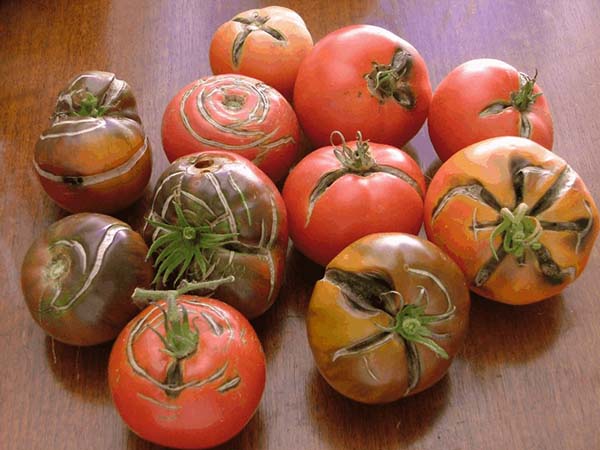
By the way! The tendency of the variety is usually the reason for the appearance all types of cracks (radial and especially concentric), including mesh of cracks around the top of the fruit.

This means that when choosing the next variety (or hybrid) for planting, in addition to the desired characteristics, pay attention to the presence of the mark "resistant to cracking" in the variety description.
Important! It should be understood that if you violate the basic rules of agricultural technology, which cause cracking of the fruit, then even the most resistant to cracking variety will surely be covered with cracks (possibly with the exception of cherry).
Types of tomato fruit cracking
So, on the fruits of tomatoes, two types of cracking can be observed:
- radial cracking - this is cracking of the epidermis of the fetus, which, as it were, radiates from the place of attachment of the cups to the place of attachment of the flower;
Causes:
- sudden changes in temperature;
- uneven watering or sudden changes in humidity;
- grade tendency.
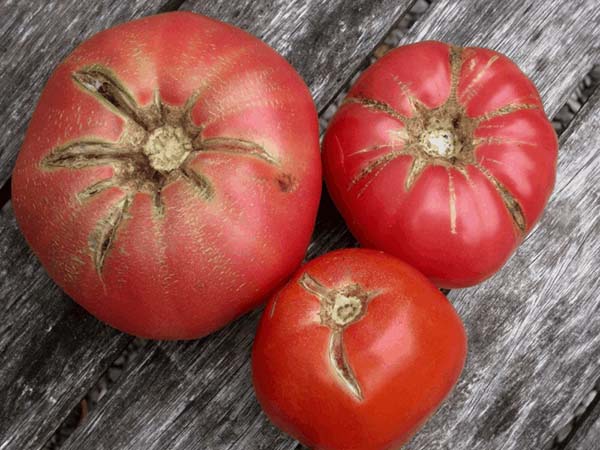
- concentric cracking - This is cracking of the fetal epidermis in the form of concentric circles around the attachment of the calyx.
Causes:
- variety tendency;
- eating disorders (overfeeding with nitrogen).
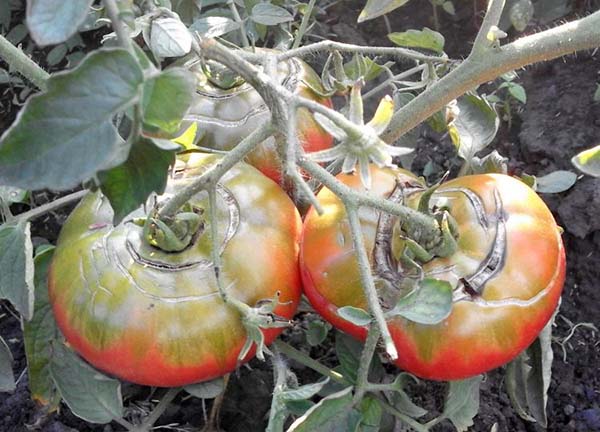
Also on tomatoes you can notice a grid of cracks around the top of the tomato fruit... This disease is especially harmful on large-fruited tomato varieties, and the degree of its development depends on the variety.
The reasons for the appearance of a network of cracks around the top of the tomato fruit are:
- any violations of the flower organs during
flowering;- too cold weather conditions during the flowering period;
- also a high content of
nitrogen in the soil.
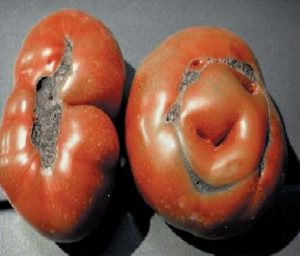
In other words, you can determine the cause of cracking by the appearance (type) of cracks, and then apply the necessary measures.
Thus, now you know why tomatoes can crack in the greenhouse and in the open field. There are not so many reasons: as a rule, you just need to adjust the watering regime for tomatoes (for example, if you rarely visit the country, then do drip irrigation or mulch) and / or find and purchase a variety (hybrid) resistant to cracking.

